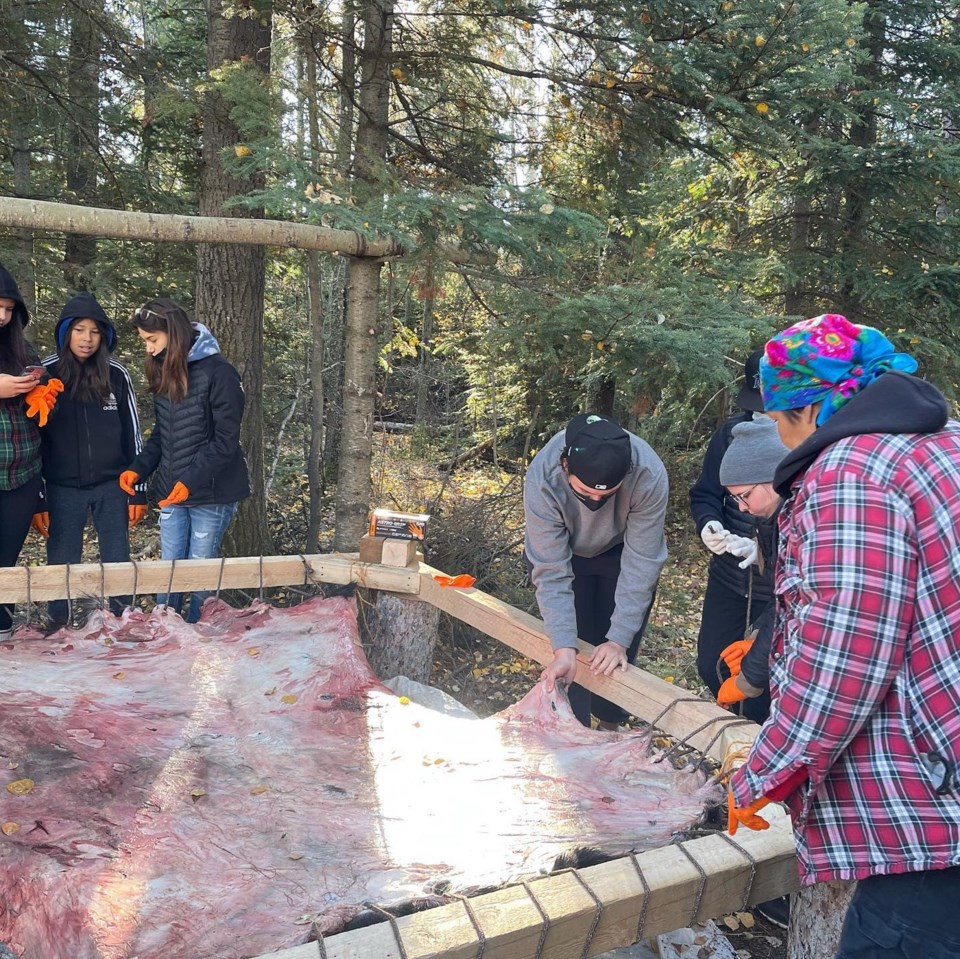Marina Nokohoo learned from her parents how to tan animal hides into leather. It is a lengthy process that can take her 12 days to finish if she works alone.
But as a traditional knowledge keeper with the Chipewyan Prairie Dene First Nation, she is more than happy to pass her skills to other Indigenous youth in the Fort McMurray Wood Buffalo region.
“I want them to know that what we are doing was being taken away from us and we are still doing it today. We have managed to succeed, we are still able to share that knowledge,” said Nokohoo, a Dene woman who teaches the language at Father R. Perin School in Janvier. “It wasn’t all taken away from us and some of us were able to hang onto that knowledge and share it.”
Nokohoo was an instructor with a hide tanning workshop organized by Nistawyou Association Friendship Centre and Pawâmiw Creative. The workshop was held this past October in Anzac for high school students across the region.
Jes Croucher of Pawâmiw Creative hopes to host future hide camps next year. She also wants to extend the workshops to all local schools and community organizations.
“It is important for them to have an understanding of their cultural identity, to feel connection to the past, to the work of their ancestors, in order for them to help carry it forward,” said Croucher, a Cree woman with Fort McMurray First Nation 468, in an interview.
“The main goal of the camp was not for them to be able to go out and tan their own hides. It was to feel that connection, to feel the teachings of the moose, to feel the teachings of their ancestors to know they have a place that they belong and that they matter.”
Communities would begin harvesting an animal for clothing and meat after it had been hunted. Students would prepare moose hides by mounting them onto a frame and scraping the hide to remove excess flesh and fur.
Students took away more than just the technical skills of working on a hide. They also learned team work, respect and patience. Nokohoo said the hide camp was one of the most amazing weeks she has ever had.
“It was truly eye-opening, seeing how our people and our youth are just yearning for knowledge of their culture and their history,” she said.
“This is part of their way of life. This is who they are. The language, the culture, the history and our values and laws, how we treat each other as people and how we respect each other, the animals and the earth. We’re all connected. That is what I want them to take away.”




